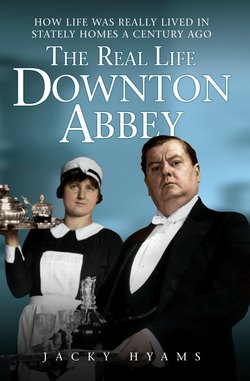Читать книгу The Real Life Downton Abbey - Jacky Hyams - Страница 9
На сайте Литреса книга снята с продажи.
THE TOFFS
ОглавлениеThe families that own the vast country house estates during this period are in one sense an elite power group, part of a super-rich ruling class of land-owning aristocracy and high-born gentry that have remained at the very epicentre of power and royal patronage in Britain for hundreds of years.
Effectively, they are a ruling class, around 10,000 people from l,500 families whose privilege, ancient lineage and wealth has kept them at the top of society for hundreds of years.
Aristocrats, where the head of a family might be a knight or a baronet, hold the very highest political influence and power in government. And they own 90 per cent of the nation’s land, much of it in vast, sprawling estates. As a result, their wealth, frequently handed down to the eldest son over the centuries, is immense: large country house estates valued at over £5 million (around £300 million in today’s money) were not unknown in the years just before 1914.
But it doesn’t stop there. These multi-million pound vast country homes are also continuous and awesomely impressive power bases for social networking, places for relaxing, extravagant dining, hunting and shooting parties with their owners’ wealthy equals, other aristocrats and royalty, once the cares of running the country are set aside. Moreover, some of these homes have been created, at huge expense and usually by ‘new’ money (the millions earned by entrepreneurs in trade, shipping or mining, rather than ‘old’ money, i.e. inherited wealth) as a showcase for their owner’s wealth and top-notch status, with big collections of priceless art, luxurious furnishings and enormous and perfectly tended gardens and tennis courts.
Some of these aristocrats own grand town houses too – located in specific upmarket areas like Piccadilly, St James’s Square or Park Lane in London: only the ‘right’ address will maintain the upper-crust profile, postcode snobbery of the highest order. Others own more than one estate, so they may frequently move around the country, visiting each one, according to the time of year.
As a result, huge numbers of servants have, by tradition, always been needed to work and run these mini empires: think of the many hundreds of thousands of people employed by Britain’s big supermarkets and you get some idea of the scale of the Edwardian landowners’ power as employers and bosses. So not only do the elite, exclusive group of aristocrats, gentry and highly esteemed members of the House of Lords run the country – they have been, for centuries, its greatest providers of work, perhaps the biggest employers in their area, keeping hundreds of servants and workers in employment.
But these earls, knights and duchesses, once supremely confident of their prime position in the pecking order, are having to confront unsettling changes in the world around them. None of these changes have happened overnight. But the march of progress and the spectre of war are about to topple their pre-eminence.
And so as the storm cloud of World War I starts to gather over their gilded world, the decline of their once overwhelming influence – through what comes to be known as a ‘golden’ era – accelerates. Essentially, this is the slow beginning of the end of their tightly held reign over society, the extreme rule of privilege and wealth.
